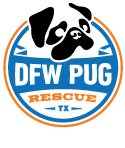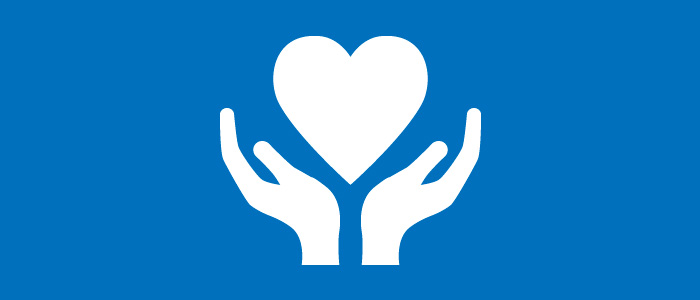Guide for caring for a newly adopted pug or caring for a Foster Pug.
By Dr. Max E. Ficken
I am going to outline the items to watch for and signs of problems associated with a rescued pug. Unless we have owner surrender, most all of our pugs come from animal shelters or environments where living conditions are less than ideal. Most of these dogs have been exposed to upper respiratory disease, intestinal parasites, fleas, ticks, mange, and various other contagious diseases. When we get these patients into the hospital, we try to determine through blood tests, fecal exams, and physical exam what problems they might have and what they need to prepare for adoption. If they have not been neutered, we do so and update vaccinations. If parasites are present we de-worm them and apply appropriate flea and tick treatments that will give 30 days of protection.
We feed science diet to the animals in the hospital. I am not promoting this over other diets but just letting you know what they have been fed. Changes in diet should be made over a 3-4 day period to avoid intestinal upsets.
Pugs that have been spayed or neutered will have had an endotracheal tube placed while surgery was performed and may have a mild cough for 1-2 days. Any severe cough or more prolonged cough indicates some other problem that needs attention. This could be bronchitis from another animal at the shelter, or in the case of older pugs a problem with the airway, trachea, or heart. These may require long term treatment that we will advise you of at the time of adoption. Be aware that some of these cases will not show up while in the hospital but will become obvious a few days later so be especially watchful for the first 3-4 weeks. In most cases we will have identified these problems before adoption.
Surgical incisions from the neutering have some slight swelling; but if there is a lot of swelling or discharge, they need to be seen. Neuter incisions on the male pugs are closed with absorbable sutures that do not need to be removed. Spay incisions on the females are closed with sutures that need removal in 10 days. 
All pugs are tested for intestinal worms and de-wormed as needed. All are tested for heartworms and scheduled for treatment if positive. Dogs that are infected with heartworm are not given heartworm preventive unless we have verified they do not have microfilare. Giving Heartgaad to dogs with microfilare will likely cause severe allergic reactions. If you are prescribed Heartgard for a heartworm-infected dog, we have verified that it does not have microfilare (the baby heartworms). These dogs do have adult heartworms will be scheduled for treatment as soon as possible.
If you adopt or foster a pug undergoing heartworm treatment, there are several items to keep in mind. These animals are under rather severe stress and require rest, avoidance of forced exercise, close observation for increased coughing or breathing difficulties, or loss of appetite. Any change in behavior that you are not comfortable with is cause to call the office or contact your regular veterinarian for help. Give medications as prescribed and be sure to keep follow-up appointments to be sure the treatment plan is completed. All pugs are started on heartworm preventive as soon as they are verified free of heartworms.
Many of these pugs have fleas and or ticks and are treated with Frontline or Advantage, which will give 30 days of protection. Be sure to follow up with treatments if necessary.
Various forms of mange are seen frequently and require several treatments to resolve the problem. Please bear in mind that these patients may need several repeat visits over a 2-3 month period. If there is a lot of itching or self-mutilation, please contact the office for advice.
Many special needs cases are identified that require special care and longer recovery such as fractures, joint problems and abnormalities of the respiratory system. Special instruction on these cases is provided as needed.
Vomiting and or diarrhea are frequently encountered the first few days after adoption. These are usually associated with diet changes from the Shelter to the hospital to the adoptive home. If vomiting occurs withhold all food and water for 4 hours then start with small amounts of water (one tablespoonful) every 30 minutes for 2-3 hours. If no more vomiting occurs, start giving a teaspoon of food every hour for 3-4 hours and if OK then start with a little larger amount of food every 4 hours for 24 hours before going back to the regular schedule. If the vomiting persists then withhold all food and water until you can contact the office or your veterinarian for assistance.
Pugs that have diarrhea with no vomiting should be given about 1⁄4 their normal diet for the next 24 hours to lessen the burden on the intestine. Normal water should be available to avoid dehydration. Your veterinarian should see patients with Diarrhea that persists for more than 24 hours or contains blood as soon as possible.

